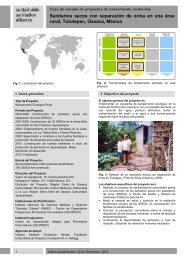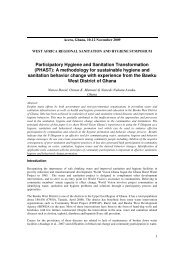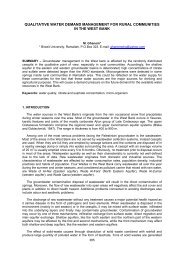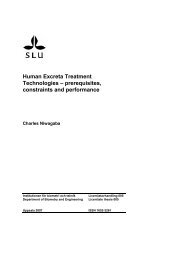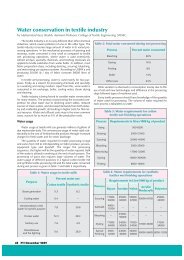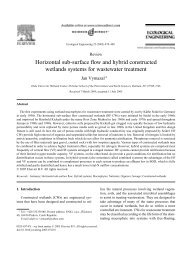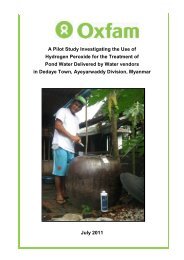The Incinerator Guidebook: A Practical Guide for Selecting ... - SSWM
The Incinerator Guidebook: A Practical Guide for Selecting ... - SSWM
The Incinerator Guidebook: A Practical Guide for Selecting ... - SSWM
Create successful ePaper yourself
Turn your PDF publications into a flip-book with our unique Google optimized e-Paper software.
Glass disposal<br />
Glass vials deposited in incinerators tend to clog grates and causes explosions when unopened. As a<br />
general rule, glass should not be incinerated. <strong>The</strong> increasing use of glass syringes <strong>for</strong> new prefilled<br />
vaccines represents a new challenge to waste disposal since these syringes are infectious and should<br />
not be incinerated with other waste.<br />
A glass crusher with provision <strong>for</strong> crushed glass to be heated and sterilized will be essential at<br />
disposal facilities in the coming one to two years as new vaccines emerge packaged in glass.<br />
Provision of space within the enclosure or building <strong>for</strong> equipment to crush glass syringes and vials<br />
is important.<br />
Placenta pit<br />
If you are using a fuel-assisted<br />
incinerator at a facility where a<br />
maternity unit is located then,<br />
subject to local customs, a<br />
placenta pit should be built.<br />
Auto-combustion incinerators<br />
are not suited to destroying<br />
placenta. <strong>The</strong> pit should be<br />
located at some distance (20<br />
meters or more) from the<br />
incinerator enclosure.<br />
Equipment inspection<br />
Each incinerator needs its own<br />
checklist. <strong>The</strong> manufacturer<br />
should help to put this checklist<br />
together, as they know best<br />
which parts might break and<br />
require replacement. <strong>The</strong><br />
supervisor needs to inspect the<br />
system quarterly at a minimum.<br />
In order to determine the<br />
condition of the system, and<br />
predict possible problems or<br />
failures across the network. In<br />
this way, spare parts can be<br />
ordered in advance so they are<br />
available if and when the need<br />
arises.<br />
Lessons learned: WDU Construction in Rwanda<br />
Rwanda constructed 13 small-scale incinerators <strong>for</strong> HCW<br />
disposal in 2005. Design criteria <strong>for</strong> these incinerators included:<br />
� A temperature gauge to help operators manage the<br />
per<strong>for</strong>mance of the incinerator to maximize combustion.<br />
� Air-flow valve in the chimney to buffer the residence time<br />
of gas in the secondary chimney when different waste<br />
types were loaded.<br />
� Addition of an underground ash pit with easy access to<br />
the ash chamber.<br />
� A needle pit to safely contain needles removed with<br />
needle removers in clinical settings.<br />
� A secure enclosures to control community access to<br />
equipment and to provide storage space <strong>for</strong> waste, tools,<br />
protective equipment, and record keeping.<br />
A report was prepared by the PEPFAR-funded through CDC and<br />
USAID MMIS project in 2006 detailing lessons learned by<br />
partners during this project. (www.mmis.jsi.com). A 2008<br />
assessment by the Rwanda Ministry of Health and PATH<br />
concluded that additional hands-on operator training was<br />
required; that personal protective equipment meeting<br />
per<strong>for</strong>mance specifications was not available in Rwanda; and<br />
that the weaknesses of construction materials, metalwork, and<br />
non-adherence to technical drawings could be overcome. <strong>The</strong><br />
cost-effective method identified to tackle these issues was to<br />
import critical components including refractory bricks and precise<br />
metalwork in stainless steel. Recommended specifications <strong>for</strong><br />
future construction of waste disposal units in Rwanda can be<br />
found in Annex 3. For more in<strong>for</strong>mation, see:<br />
http://www.create.org.in/wdu_glance.htm.<br />
19



